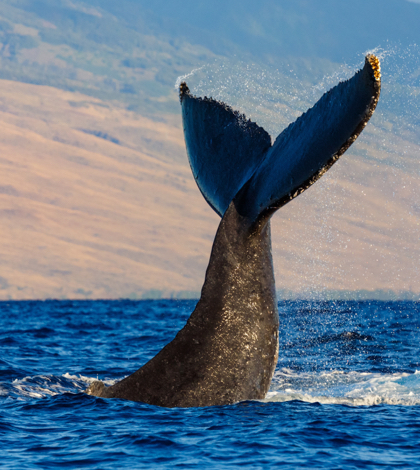Nine of 14 of the world’s humpback whales were removed from the U.S. government’s list of endangered species on Tuesday according to the National Oceanic and Atmospheric Administration (NOAA). The nine distinct humpback populations have recovered enough that they no longer warrant listing under the Endangered Species Act.
“Today’s news is a true ecological success story,” said Eileen Sobeck, assistant NOAA administrator for fisheries. “Whales, including the humpback, serve an important role in our marine environment. Separately managing humpback whale populations that are largely independent of each other allows us to tailor conservation approaches for each population.”
In 1973, then President Richard Nixon signed the Endangered Species Act (ESA) and humpbacks were included in the Act. President Nixon had signed the ESA on the heels of the 1972 U.S. Marine Mammal Protection Act which banned whale hunting. A whaling moratorium was enacted in 1986 by the International Whaling Commission.
With the international and U.S. protections in place the humpback populations have experienced a dramatic comeback. With as few as 5,000 humpbacks in the 1960s NOAA is now estimating that some 85,000 exist today. Whale hunting has all but ended, thanks to worldwide efforts.
Despite the lifting of some earlier bans, efforts to protect the humpbacks will continue. The Chief of NOAA Fisheries’ endangered species division, Angela Somma, has said that “very little will actually change” in efforts to protect whales.
“Many of the day-to-day protections and activities will continue to occur,” Somma said in a call to reporters Tuesday. “We will continue to work and maintain their conservation.”
The International Whaling Commission’s moratorium on commercial whaling will also remain in place. Humpbacks in U.S. waters will still receive protection under the Marine Mammal Protection Act. This comprehensive conservation law protects all marine mammals including whales, dolphins, seals, manatees and polar bears.
Californians often see the Central America and Mexico whales as they migrate to and from Alaska and Canada, home to their winter feeding grounds. NOAA has opted to not modify the Central America humpback whales’ endangered status but have downgraded the Mexico whales’ status to threaten. Downgrading the Mexico whales’ status will not alter its level of legal protection, according to NOAA.
But both the Central America and Mexico whales are at risk for ship strikes and becoming tangled in fishing ropes. Whales off the coasts of Oregon, Washington and California had 61 known instances of becoming entangled in fishing ropes last year and California represented the majority of the cases. This represents the highest number of whale entanglements since NOAA began record-keeping in 1982.
Kristen Monsell, an attorney with the Center for Biological Diversity, noted that, “There’s been a steadily increasing trend of entanglements of large whales, including humpbacks, on the West Coast,” said Monsell. “You get a lot of overlap of whales and fishing gear in that area, which is just a recipe for disaster.”
 California Water News Daily Your Source For Water News in California
California Water News Daily Your Source For Water News in California


